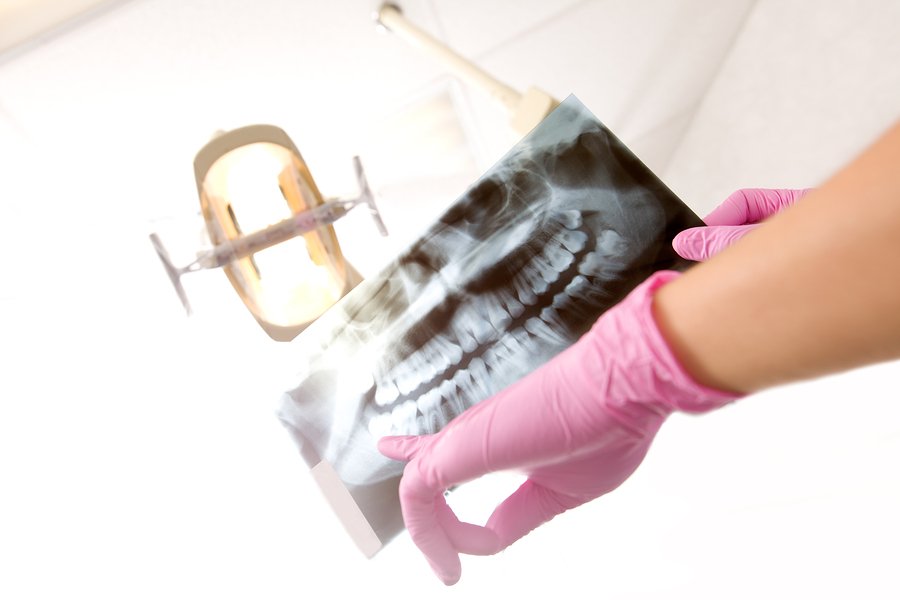Also known as radiographs, dental X-rays are a critical part of just about every dental care treatment plan. X-rays help dentists diagnose existing issues and identify potential problems before they get worse.
What Are the Different Types of Dental X-rays?
A dental professional can order several different types of X-rays, depending on the location of an oral health problem. Some of the most common include:
- Periapical: Offers a clear view of the whole tooth, from the crown to the actual bone which supports the tooth
- Bite-Wing: Provides a visual of the upper and lower posterior (back) teeth, allowing the dentist to see decay and alignment problems
- Full Mouth Series: A complete set of intraoral X-rays of the teeth and adjacent hard tissue, typically prescribed for an adult new patient (and every 3-5 years subsequently) consists of a set of four Bite-Wings as well as six Periapicals of the anterior (front) teeth and eight Periapicals of the posterior (back) teeth
- Panoramic: Gives a comprehensive view of the jaws, teeth, sinuses and jaw joints; often used to plan orthodontic treatments, wisdom teeth extractions, or implant placements
- Occlusal: Provides a visual of the floor or roof of the mouth to highlight children’s tooth development
Dental X-rays: How Often Should You Get Them?
This typically depends on a person’s dental history and current condition. Some patients may need dental X-rays as often as every six months, however, for the majority of adult patients they are prescribed once per year. Your dentist can give recommendations based on your individual needs.
What Do Dental X-rays Show?
Because they offer detailed views of bone, teeth and supporting oral tissue, X-rays allow dentists to:
- Identify cavities
- View tooth roots
- Assess the health of bone around the teeth
- Identify periodontal disease
- Evaluate the status of developing teeth
- Identify tumors within oral tissue
Are Dental X-rays Safe?
Dental X-rays are considered safe for the vast majority of healthy people. According to the ADA, dental radiation exposure represents a minor contribution to a person’s total exposure from all sources, both natural and man-made. Dental professionals abide by strict safety guidelines to minimize a patient’s exposure to radiation. That said, if you have a pre-existing medical condition or are undergoing cancer treatment, tell your dentist before your exam.
How Much Radiation Is in Dental X-rays?
Dental X-rays are one of the smallest radiation-dose studies performed in modern medicine. A routine exam with four Bite-Wings transmits about 0.005 mSv, which is very similar to the amount of radiation a person would be exposed to during a plane flight of one to two hours.
Dental X-ray and Pregnancy: Are there Dangers?
According to the ADA, research has affirmed that dental X-rays are safe for pregnant women and their fetuses. Other research has also shown that it’s safe for pregnant women to undergo dental treatment with local anesthetics. That said, you should always tell your local dentist if you are pregnant or breastfeeding before you get an exam.
How Much Do Dental X-rays Cost?
The cost of a dental X-ray can vary from $15 to $200 dollars, depending on the type of X-ray and your city or state. Most dental insurance plans will cover all or most of this expense, as long as you haven’t exceeded your limits for a given year.



 Previous Article
Previous Article